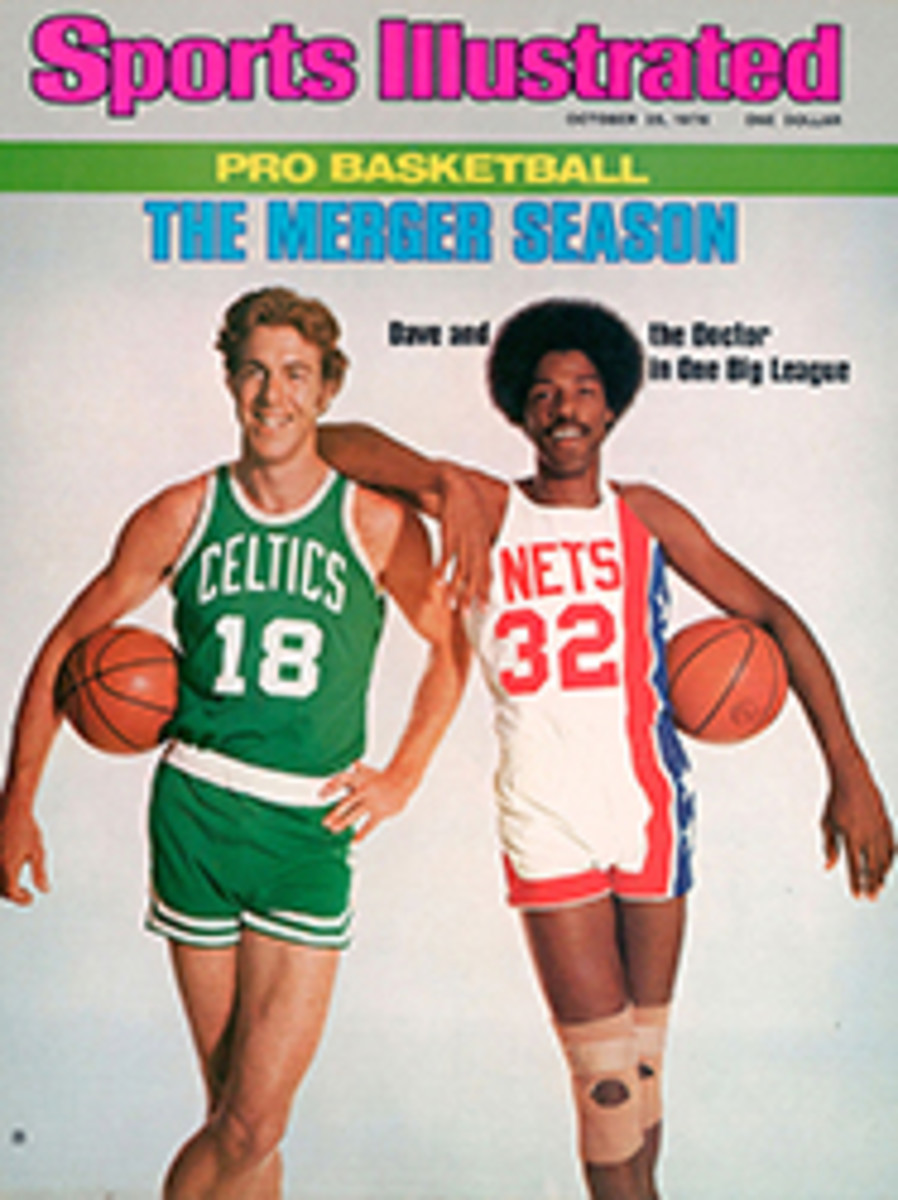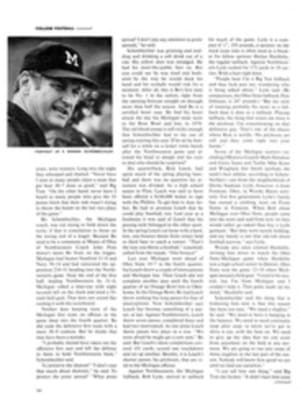
BEAR WRESTLING TOOK HOLD 100 YEARS AGO, BUT LOST WITH LENA'S REVENGE
Every so often a particularly powerful athlete manages to grab some publicity by wrestling a large and potentially dangerous animal. To date, however, there has been little clamor for the revival on a regular basis of a spectator sport once quite popular in America—man-vs.-bear wrestling. (Perhaps television people fear that post-match interviews with victorious bears would be less than scintillating, although the beasts could be no more noncommittal than some athletes who come to mind.)
At any rate, it was just a century ago that the first man-bear contests were held in the United States. They were a byproduct of a flurry of interest in Greco-Roman wrestling. The Greco-Roman style belies its name by having little similarity to classical wrestling. It was developed in France and became popular on the Continent about 1860 and in America a decade or so later, and persists in modified form as an Olympic sport. In order to score a fall, a wrestler had to throw his opponent so that his two shoulders touched the floor simultaneously. Neither tripping nor any holds below the hips were allowed; as a result, the bouts tended to be tediously long. But if Greco-Roman was not exactly ideal for men, the style seemed made to order for bears.
That fact caught the attention of Emil Regnier, a businessman-athlete who opened a beer shop at 104 Prince Street, New York City during the 1870s. Described by The New York Times as the "protean wrestler of the Western Hemisphere," and "the greatest Greco-Roman wrestler of them all, with one or two exceptions," Regnier decided to increase trade at his shop by holding wrestling matches in a tiny, adjacent building known as Athletic Hall. It was in this 300-seat auditorium on Dec. 11, 1877 that bear wrestling had its debut in America.
Eager spectators began to fill the hall at 8:15 p.m. and spent half an hour smoking and talking before watching a pair of young men wrestle for another 30 minutes. This bout was followed by a musical interlude supplied by three Italians (a harpist and two violinists). Then Regnier, resplendent in blue trunks and white tights with medals prominently displayed, leaped upon the platform and "flung 50-pound weights about his head with alarming rapidity." Newspapers described him as "comely and muscular."
A few minutes later two bears from the circus and their handlers made their way through the crowd. Upon arriving on the platform, one of the animals proceeded to sit up on its haunches while, according to the Times, "the other, a tall brown fellow, for whom music had charms, waltzed with irresistible drollness to the tune played by the sunny Italians." Finally the fourth participant, a wrestler named William Heyster, made his entrance. After acknowledging the cheers of the crowd. Heyster—nicknamed the "Oak of the Rhine"—prepared to square off against the larger of the two bears.
Certain precautions had been taken to protect the men. Both bears wore iron muzzles, and their foreclaws had been rounded off with a file. This did not diminish their enormous strength, which soon became apparent when Heyster was unable to throw his opponent to the ground. "The bear did not understand the fun of the thing," the Times reported. "He did not want to be thrown, but he exhibited no desire to throw his opponent." The match therefore was declared a tie.
Regnier fared much better. After considerable grappling, he managed to throw his bear—but was dragged down with it. As the crowd cheered and the sawdust from the stage filled the air. Regnier finally managed to roll the animal over on its back and hold its head and shoulders to the platform.
A bit more than a week later, bear wrestling graduated to the respectability of the Thé√¢tre Fran√ßais. Regnier was back and, according to one newspaper report, his opponent this time was "a most sagacious brute" named Lena, who "poked her iron muzzle in his face...put unlawful crooks upon his legs...was evidently disposed to pull his hair and used every artifice within the range of her sagacity to defeat him." Despite the 300-pound bear's tactics, Regnier eventually managed to secure a good grip under her forelegs, threw her to the canvas and was declared the winner.
The second match featured a wrestler named Theobald Bauer—who happened to be Regnier's partner in the beer shop—against a large bear named Martin. Although introduced as "unvanquished." Martin was not a very willing fighter. Backing away all the time, he soon had Bauer "swearing audibly" in his efforts to get a grip. After many minutes Bauer finally succeeded in flinging the bear to the ground.
Lena and Regnier then went at it again, this time with a different result. Having learned something, no doubt, Lena grasped Regnier around the hips, got a crook on his leg and brought him down. Despite the illegal tripping, referee Fred Englehardt declared Lena the winner.
On Christmas Day, 1877 the sport had become sufficiently popular to entice an audience of "sporting gentlemen" to Central Park Garden for a series of bouts. Regnier and Lena, obviously the best of both species, were cheered as they came onto the stage. They held each other tightly for two minutes before Lena tossed Regnier to the floor "on one point, with a thud." The bear then pressed its advantage, "clawed him, squeezed him. and poked...about his shoulders as if...eating the Frenchman's ears." Eventually Regnier got to his feet and won the match.
A short time later, after Regnier and Bauer had closed their saloon, referee-entrepreneur Fred Englehardt formed a troupe, which consisted of Lena, Martin and a third bear named Marian, to tour the states and promote the sport. At first all went well. Then Lena, perhaps smarting at the string of close losses to Regnier, grabbed another wrestler named Jean Francis Borne and squeezed him until he nearly collapsed. Borne was taken to New York Hospital, where an examination showed internal injuries. On April 14, 1878, Borne died, and bear wrestling went into a severe decline. New York Deputy Coroner Miller may have tried to save the sport by reporting after the autopsy that Borne's system was "in a very bad condition, caused by fast living, and that he was also suffering from pyaemia, following a disease contracted in his youth," but according to legend the real cause of Borne's demise was Lena's revenge, and so far it has lasted a hundred years.

